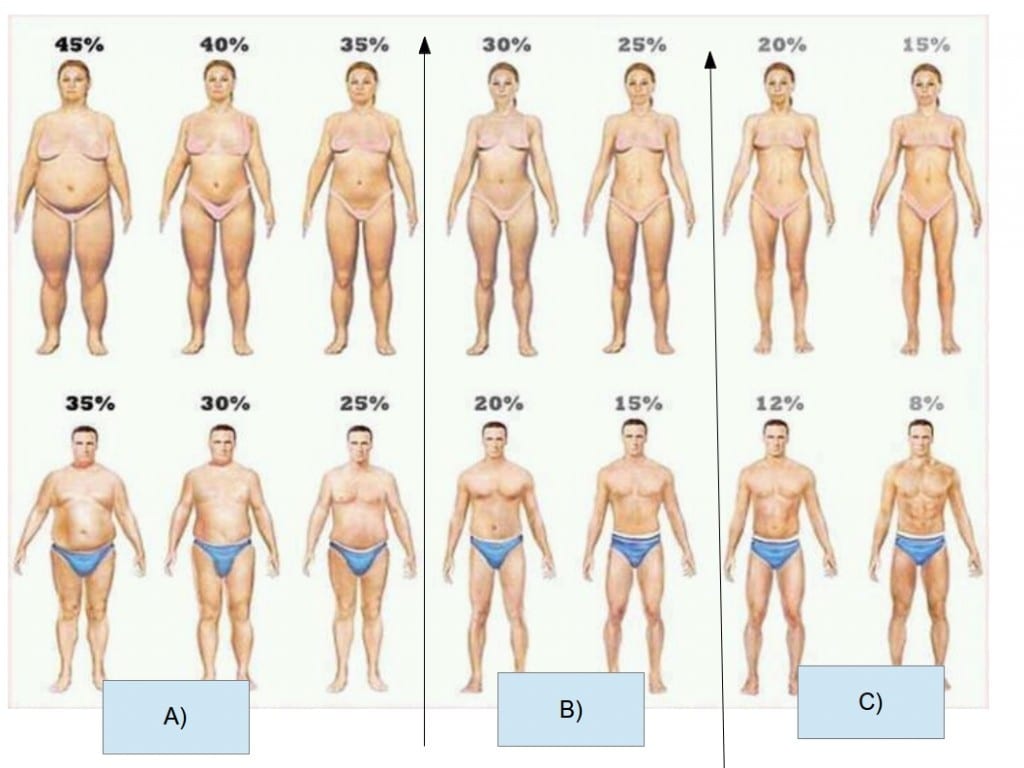How to Use Carbohydrates to Your Advantage …
28/10/2015
When you hear the word ‘carbs!’ does the Grim Reaper rear his ugly head?
When you eat carbs do you feel guilty? like you’ve eaten some forbidden fruit (pardon the pun)
“Carbs make you fat! Avoid carbs! Carbs are bad! Low carbs! ZERO carbs! No carbs before Marbs!”
If I had a pound for every time i’ve encountered such statements i’d be the richest man in Sheffield!
Truth is carbs are not good or bad, they are simply a macro nutrient which provide our body with energy just like proteins and fats. If you use carbs in the wrong way you can store extra body fat, like wise if you use carbs the right way you can lose body fat and build muscle. It’s all about context.
Lets dive into this a little deeper. . .
Macro Nutrients:
Macronutrients are nutrients that provide the body with calories, calories are used for energy. Nutrients are substances needed for growth, metabolism, and for other body functions. Since “macro” means large, macronutrients are nutrients needed in large amounts. There are three macronutrients:
- Carbohydrate (4 calories per gram)
- Protein (4 calories per gram)
- Fat (9 calories per gram)
Different Macro Different Impact:
Both carbohydrates and proteins have the same amount of calories per gram (4 calories), and fats are just over double (9 calories per gram). Although calories are the same per gram for protein and carbs, how each food reacts in our body is very different.
Have you ever had that tired feeling after a Sunday Roast? It happens about 1-2hrs after devouring your gravy infested roast potatoes and parsnips. The energy slump that makes you want to close your eyelids and sleep! Such is the impact of a high carb meal.
Carbohydrates have a larger impact on blood sugar levels, causing fluctuations (ups and downs), compared with protein’s and fats which impact blood sugar levels much less. Therefore if you were to eat 100g of carbs (400 calories) the impact on blood sugar levels would be much greater compared with eating 44g of fat (400 calories). Although the same calories have been ingested the impact they have on the body varies greatly. When large amounts of carbs are consumed you tend to get a burst of energy followed by a crash.
Carbs & Insulin:
When we consume food, our body produces a hormone called insulin (unless your Type 1 diabetic). Insulin is like a postman, who delivers parcels to your door. What insulin does is help transport nutrients around your body, taking them to the necessary places for energy. Insulin is triggered by any food consumption, although how much depends on your bodies ability to produce it, the macronutrients and quantities consumed. When you consume fats and proteins your body requires much less insulin compared with when you consume carbohydrates, which elicit a higher insulin response.
Insulin Resistance:
2.1. billon people on our planet are reported to be obese or overweight. 62% of British citizens fall in this category (that’s scary right?). We live in a fast paced society, we want fast results, and we eat fast food!
The trouble is these foods often contain poor nutrient content and a bunch of carbs. Excess calories, lack of exercise and insulin resistance all contribute to the accumulation of body fat and poor health. The more body fat we have the more insulin resistant we become. Insulin resistance is where your cells are inefficient at taking in and using fuel. Put in other words, it’s like trying to get into a club, when your too drunk! the bouncer wont let you in. This is what happens when we become insulin resistant, our cells and muscle don’t respond like they should and any excess can be layered down as body fat. It can also increase hunger, making us eat more. Before we know it . . . were in a whirlpool, craving more, eating more, gaining more!
How Many Carbs to Eat?
There’s no exact science, and everybody is different. But there are strategies and guidelines we can look at. Based on the image below, where do you fall on the spectrum?
As a general rule the more body fat a person carries the more insulin resistant they are. For example people in category C are likely to handle more carbohydrates and utilise them more efficiently than people in category A. For those looking to reduce body fat a period of low carb eating, or carb cycling (discussed later) can prove very beneficial for reducing body fat and increasing insulin sensitivity : the bodies ability to utilise and store carbohydrates more efficiently.
Establishing You Goal:
Is your goal fat loss or muscle building? or both? No matter what your goal carbohydrate manipulation is a great tool to either build muscle or lose body fat.
When looking to lose body fat lowering carbs can be effective because 1) you reduce calories (less carbs = less calories) and 2) you boost insulin sensitivity.
The same can be said for muscle building, carbs can be used to increase calories, helping to build muscle mass. Insulin is very anabolic (muscle building) because when combined with training it will drive vital nutrients like protein and glycogen into muscles cells, for growth, recovery and energy.
It all really comes down to nutrient timing, establishing quantities and monitoring progress. You will need to make adjustments based on the feedback your body gives you. Make sure to take regular assessments i.e. pictures, measurements, body fat %, etc.
Strategies for Fat Loss:
1) Ketogenic Dieting : is where you near enough eliminate carbs completely. You eat protein and fat based foods. As a general rule of thumb 70% of your macro nutrients (calories) would come from fat and 30% from protein.
Everybody responds differently but usually within a couple of weeks, your body starts to use fat as it’s main fuel source (because carbohydrates are no longer present).
The ketogenic diet is a great tool for shifting body fat. The downside is that you are restricting what foods you are able to eat, and the first couple of weeks are quite challenging, whilst your body transitions and adapts to a new way of using fat for fuel. I also wouldn’t really recommend ketogenic dieting if your goal is to build muscle.
My Experience: I recently did a 28 day ketogenic challenge (post and video blog coming soon). I lost a serious amount of body fat and generally felt amazing.
2) Carb Cycling : Is where you fluctuate your carb intake in phases or on a daily basis. For example on training days you may have more carbs, and on rest days 0 or a much lower carb intake. The theory behind carb cycling is that you fuel your body with carbs when you need them the most. In other words you fill up your cars petrol tank for the journey ahead. The amount of petrol (carbs) you put in will depend on the length of the journey (length and intensity of the workout). Carb cycling is a great way to keep carbs in your diet, to build muscle, and also to burn body fat and build up insulin sensitivity on the days when you consume 0 or much lower carbs.
My Experience: This is now my preferred method of doing things. I will have 2 high carb days (400-500g per day), 2 medium carb days (150-200g) and 3 low carb days (less than 25g per day). This allows me to build muscle, and stay lean.
3) Carb Back Loading : is where you consume carbohydrates at the end of the day. For example you would eat protein and fat, throughout the day and then with your evening meal you would have a portion of carbs.
My Experience: I use carb backloading quite alot. I find I crave carbs more in the evening and I also sleep much better due to the relaxing effects (lowering of blood sugar) carbs have.
What’s the Best Strategy?
Well that depends. You need to figure out what your main goal is? what’s going to be sustainable? can you maintain this in 6 months from now?
There’s no exact science or best strategy. There’s no one size fits all approach, but a bunch of tools we have access to. Don’t be afraid of interchanging strategies i.e. 2-4 weeks following Ketogenic, followed by carb back loading for 2-4 weeks. What’s important is that you measure progress, do things in cycles and set yourself goals to measure i.e. i’m going to do this for 4 weeks, fully commit and then re-asses. Reflect . . .Has it worked? is is sustainable? what have a learned from this experience?
How To Make Carbs Work For You:
1) Train more : lift weights. You need to create a demand and use for carbohydrate expenditure. When you train your body will type into glycogen (stored carbohydrates) and use carbs for fuel. The more petrol you use the more you can put back into your tank!
2) Consume carbs around workouts : your body is much more likely to utilise carbs around your workouts. Carbs are the bodies preferred energy source and if consumed around workouts are more likely to be utilised for fuel. You will also increase nutrient delivery to working/worked muscles.
Final Verdict:
Carbs are not good nor bad, like most things in life it’s about moderation, context and knowing what outcome you desire. Figure out your goal and follow some of the tips outlined in this post. If your unsure of where to start hire a nutritional coach or personal trainer who’s got experience and can help educate, and formulate a plan for you if necessary.
For more about the solutions I offer please sit back and relax, take a roam around my site. I have completed over 6,000 personal training sessions, have 10 years experience in the health and fitness industry and can help you both in person and online achieve the results you desire.



